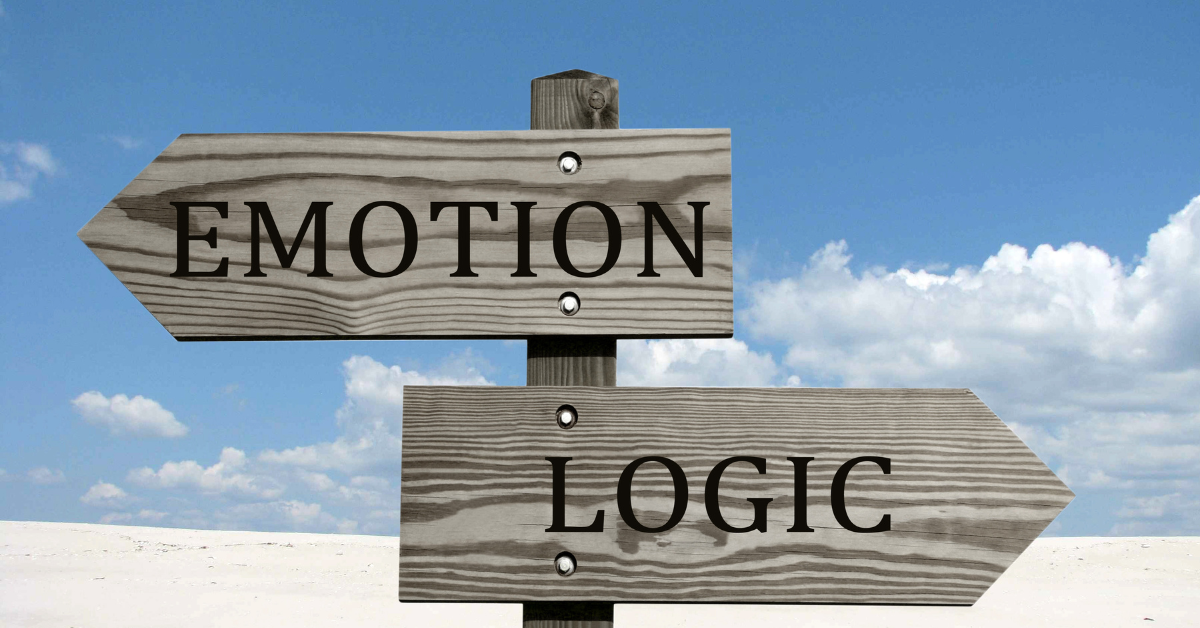Life Solutions Counseling Services
Our Blog
Providing Professional Help To Adults In The Chicago Area

Introduction: In the intricate fabric of life, relationships form the threads that weave our experiences together. Whether it's a romantic partnership, familial bonds, or friendships, relationships are the cornerstone of human connection. This blog post delves into the nuances of relationships, exploring the dynamics, challenges, and the profound impact they have on our personal growth. The Foundation: Building Healthy Connections Building strong and healthy relationships begins with a foundation of trust, communication, and mutual respect. It's essential to foster an environment where individuals feel heard, valued, and understood. Open and honest communication becomes the cornerstone, allowing for the expression of thoughts and feelings. The Dance of Compatibility: Navigating the dance of compatibility involves recognizing and appreciating differences. Every person brings a unique set of qualities and perspectives to a relationship. Embracing these diversities fosters a rich and dynamic connection. It's important to find a balance that allows both individuals to flourish while creating a harmonious partnership. Weathering Storms: Challenges in Relationships No relationship is without its challenges. Life's storms can test the strength of connections. It's during these difficult times that resilience, empathy, and understanding play pivotal roles. Facing challenges together strengthens the bond and offers an opportunity for shared growth. The Art of Communication: Effective communication is the lifeblood of any relationship. It involves not only expressing oneself but also actively listening to the needs and concerns of others. The ability to communicate openly and honestly fosters a deeper understanding, creating an emotional intimacy that sustains relationships through time. Cultivating Growth: Personal Development in Relationships Healthy relationships serve as catalysts for personal growth. Through shared experiences and challenges, individuals have the opportunity to learn more about themselves and their partners. This mutual growth contributes to the evolution of the relationship, creating a dynamic and ever-changing connection. Boundaries: Balancing Independence and Togetherness Establishing and respecting boundaries is crucial in maintaining a healthy balance between independence and togetherness. Individuals in a relationship should feel free to pursue personal goals while also nurturing the shared aspects of their journey. Setting boundaries ensures that both partners can thrive individually and collectively. Conclusion: In the grand tapestry of life, relationships are the vibrant threads that add color, depth, and meaning. Nurturing these connections with care, communication, and respect allows for a journey of shared growth and fulfillment. As we navigate the complexities of relationships, we find that the beauty lies not only in the destination but in the evolving dance of connection that enriches our lives.

Anxiety is there to serve us. It is an alert system that there is “danger”. It can be nervousness before a presentation or performance. It can be stress from having a lot to get done. It can be more pronounced like in social situations where someone feels awkward whenever they’re in a group of people or driving on an expressway. There are those people whose anxiety is so high they now SERVE IT rather than it serving them. They’re anxiety will tell them things like “everyone thinks you’re weird” (social anxiety); “you’re going to crash and kill someone” (driving anxiety); “you have to stay home if you want to be safe” (agoraphobia). As a therapist specializing in helping those with persistent heightened anxiety, I understand how debilitating it can be. Who wants to walk around (or drive) feeling like they’re going crazy because they can’t relax? Sweaty palms, fast breathing, heart pounding and racing thoughts? No thanks! Better to just avoid those things that provoke anxiety, right? Except most people don’t want to live like that. We want to enjoy life, to be comfortable in those situations. We want to put anxiety back in its place. How? Simply put we want to change THE THOUGHTS AND BEHAVIORS THAT keep anxiety at high levels. Anxiety tells us things that are unlikely to be true. Anxiety tries to be a Mind Reader, Catastrophizer, and Comforter. It’s time to challenge Anxiety and put it in its place. Challenge those thoughts, do what it’s telling you NOT to do.

Whatever hurts in a relationship can only be healed when we a re willing to turn towards our partner. This counter-intuitive to our natural inclination to move away from the source of pain. Whatever brings questions, doubt, AND pain the answer comes when we truly move towards our partner. Joining with our partner to fix what needs fixing, to heal what needs healing brings a new level of connectedness. It is connection that heals, not distance or disconnection. Closeness from turning towards heals doubt, fear, boredom, any sense of unworthiness and emptiness that comes into any relationship. Take some time and think about a problem between you and your significant other. Think about telling them how this problem is causing you pain. Ask if they are willing to work on this problem with you. Keep in mind the corner stones of any relationship are Responsibility and Understanding. What part have you played in this problem? Where is your partner coming from, what is their perspective? Take on the mindset that true closeness is the embodiment of love and intimacy. Emotional intimacy is the heart of all relationships. Without it the relationship withers and dies. Don’t let hurt stop you from healing. Love is what matters most. Let the joining of the two show you the benefit of having this person as your ally, your friend, your true love.

Time is relative. You’re rushing out the door and you yell to your partner “I’m leaving!” They yell back “OK, have a nice..”, but you’re already gone. What might happen if you took 5 minutes to connect with your partner? Would five minutes really make a difference? The answer is a resounding YES!! 5 minutes is all it takes to engage in what we call rituals of connection. These rituals are what you and your partner do regularly and consistently to build connection and instill confidence in your relationship. They happen regardless of what is happening in your life or in your relationship. In 5 minutes you can tell each other what you are looking forward to that day, like seeing a co-worker who has been out sick, or what you are not looking forward to, like a meeting with an unhappy client. In 5 minutes you can share some sign of affection like a hug and a kiss. You can share something you appreciate about each other. You can thank the other person for being in your life. Recognize that life is better with them in it. These things don’t need to be earth shattering things, things that poems are written about. They are the small things you do often that make a significant difference in your relationship. Relationships are built one small thing at a time so do the small things often.

Quite often here at Life Solutions we see couples argue a lot. Many of these arguments are simply because how they are arguing. Sometimes it boils down to logic versus emotion. Emotions can be hard to manage during conflict and can be hard to listen to. This is the time when great listening is most important. Logic, facts, can be checked for validity. Logic can be flawed; facts can be wrong. Emotions aren’t right or wrong, they are what they are. Emotions can be and need to be validated. During conflict it’s really important to have an understanding of the other person’s emotions and to convey that understanding. Keep in mind understanding does not equal agreement. You can say “It makes sense you feel that way” even though you may not necessarily feel the same way. Validation simply tells the person “It’s ok to feel what you’re feeling”. It sends the message to your partner “You matter”. When we communicate with logic and the other person is responding with emotion (or vice versa) it’s like oil and water, they don’t mix, and conflict ensues. Imagine trying to plan a vacation and your partner says “Remember our trip to Aruba. It was so romantic and fun. Let’s do something like that again.” That’s emotional so if your response is “Flights to Aruba are really expensive this time of year” that is logical. The response could be “Oh yeah I really liked our trip to Aruba too” then you are on the same wavelength and can then introduce logic to the conversation with the likelihood it will be received. Keep conversations on the same wavelengths and you will improve your communication.

What is OCD? OCD stand for Obsessive Compulsive Disorder. It is characterized by unwanted intrusive thoughts that cause great distress. In order to ease the anxiety associated with the obsessive thoughts the sufferer will engage in behaviors. These are the compulsions. Unfortunately the behaviors only temporarily relieve the anxiety so they are repeated. Sometimes the sufferer will need to engage in the compulsive behavior for a long time causing severe disruptions to their life. OCD behaviors can be excessive hand/body washing, checking doors, locks, etc., things needing to be “right”, i.e. straight angles, numbered a certain way. Treatment for OCD and anxiety is done from a Cognitive Behavioral model which includes Exposure with Response prevention. We examine the thinking behind the behavior to see if it is “realistic” thinking or “anxiety” thinking. Exposure therapy involves confronting the behaviors that are meant to alleviate anxiety. Together we create a list of “experimental” behaviors meant to challenge the anxiety. You will never be surprised or tricked and you will never be asked or told to do something you are not ready to do. The treatment is collaborative and cooperative.

A Better Night’s Sleep We’ve always known that quality sleep is good for your brain, but research tells us how and why. Studies find that when you sleep your brain removes toxic proteins from its neurons that are by-products of neural activity when you’re awake. The catch here is that your brain can only adequately remove these toxic proteins when you have sufficient quality sleep. When you don’t get high-quality, deep sleep, the toxic proteins remain in your brain cells, wreaking havoc and ultimately impairing your ability to think. This slows your ability to process information and problem solve, kills your creativity, and increases your emotional reactivity. High quality sleep (notice I did not say quantity) can be life-changing, even life-saving. Poor sleep has shown to increase the risk of many life threatening conditions including cancer, heart disease, Alzheimer’s and diabetes. Not getting quality sleep can increase anxiety and depression too. Are you getting the impression that sleep is important? In my work I treat sleep as paramount for the reasons mentioned. I also treat sleep because I know what getting consistently high quality sleep can mean to a person’s everyday life. John came to see me because he was depressed. He complained of lack of energy, poor diet, irritable or sad most days. He didn’t want to be around people even though he considered himself to be an outgoing and engaging person. I came to find that John’s sleep habits were terrible. John believed the myths about sleep that many people believe-more time in bed means a better chance of getting a good night’s sleep; naps are a good way to “catch up on sleep”; alcohol or sleep aids help to get a good night’s sleep. I was able to educate John on how to get a good night’s sleep regularly and consistently. Think of the bedroom and the bed as a sanctuary of sleep. When John thought about his bedroom he would get a little anxious because it reminded him of how hard it was to sleep. His room wasn’t that comfortable and neither was his bed. The Bed The bed should be comfortable and inviting. We want to create a mind-body connection to the bed that promotes sleep. The bed should only be for sleep and sex. Don’t eat, watch TV, read or play on your phone while in bed. The Room John came to call his room the “chamber of sleep”. He adjusted the lighting so it was softer. He adjusted the temperature so it was cooler. He got a new mattress that was comfortable. He even got black out shades so there was very little light coming in (John would wake up when light would hit the room). The Nest The nest is a place to create that you can go to promote sleep either before HHP (head hits pillow) or when you wake in the middle of the night and have trouble falling back to sleep. John’s nest has a big comfy chair, soft lighting, magazines and catalogs to browse, headphones to listen to soft music (John likes easy Jazz to help him feel sleepy). The idea is to promote the feeling of sleepiness. Keep in mind there is a difference between tired and sleepy. Tired is how we feel when we have used up a lot of energy or are lacking energy. Sleepy is the heavy eyes, head drooping feeling we get right before falling asleep. Go to bed ONLY when you are sleepy and you may get what John has-excess energy that he uses to exercise more; vigor for life; an overall sense of well being. Sleep well my friends!

Listen Up! I want to give you some practical ways to improve your relationship. Let’s start with listening. In order to be a better listener one must incorporate a desire to understand. Many people listen in order to find something to disagree with. You’ll hear a lot of “yeah but” or “I understand but”. Whatever follows “but” is disagreement. Instead, try listening to understand. Keep in mind that understanding does not equal agreement. Understanding means it makes sense to you. That’s a good line to remember-“It makes sense to me that you would feel that way”. Think of it as stepping into the other person’s reality, their model of the world. When someone feels understood there is a connection. There is that feeling of “you get me” that draws people closer. Spending time together is obviously a crucial component of a happy and satisfying relationship. The time you spend with your significant other should be meaningful and as much as possible be fun. You didn’t get together and stay together without fun. Think about those things you did together when you were first dating. Did you have something you did together that you no longer do? One great thing to do together is to discover new things. Plan some time together when you go somewhere you’ve never been before and try something you’ve never tried before. Many couples like to go to a suburb or a part of the city they’ve never been to and go to a restaurant they’ve never been to. Go to Andersonville and eat at an Ethiopian restaurant. Head to Wheaton and eat at a café’. Go to the Polish-American museum. See what you can discover together and hopefully discover a new and better relationship.


